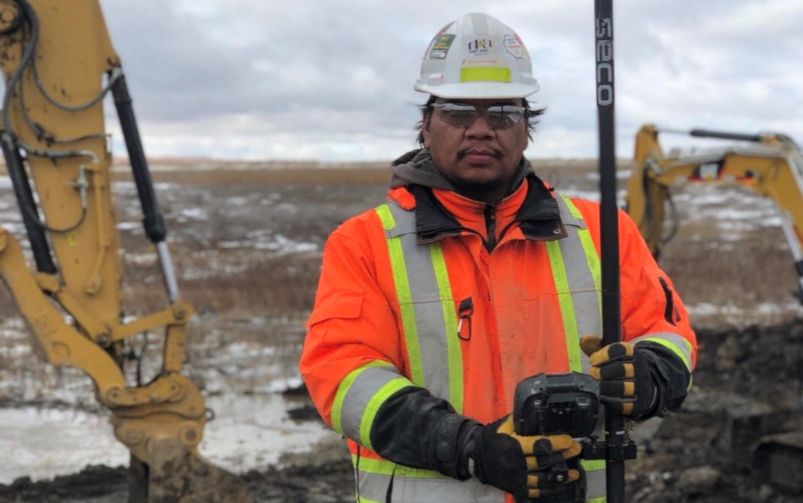When Matthew Visser, senior associate in corporate lending at Export Development Canada (EDC), landed his first job in the mining sector, he quickly discovered that his technical knowledge was only going to be half of the equation for success in the industry. Without the proper communication skills, that knowledge would largely stay buried underneath stacks of equations and data, unrecognized by superiors and colleagues. While he had received significant training in technical communication in his mineral engineering program, it did not prepare him for the amount of communication that he would do in his work. The technical reports and presentations he had learned to do in his undergraduate program were important, but they were few and far between. Instead, it was the daily, routine communication he was doing – in group meetings, in emails, or over the phone; those spontaneous, interactive presentations to colleagues, managers, and vice-presidents; and those impromptu team meetings talking on the fly about what is going on in a project – that was dominating his time and where he was demonstrating his abilities.
Those everyday communication acts often require real-time translation of technical information to non-experts who have only a limited amount of time to hear or read it. In those situations, the ability to read an audience’s needs quickly and accurately, and tailor your delivery of information to those needs becomes the most important communication skill you can master, especially early in your career.
That is why, as you develop a strategy for shaping your everyday communication skills, you should focus on three things: what your audience already knows, what your audience values, and how they will experience your communication.
What your audience knows
Whether speaking to another team member, an on-site operator, a manager, a CEO or even to the public, what your audience already knows – and what they do not – is critical to developing your communication strategy in a given situation. It will determine where to start, how much background to provide and what your goals should be. It is helpful to think about their educational background, their professional experience and their current position. For example, say you were to have two separate conversations on the same topic with two different colleagues; one has a degree in finance with no experience in the mining industry and the other has ten years’ experience in mining but no formal education. Neither have received your level of mining education and each would require significantly different starting points and communication strategies.
Effective communication begins by context building and establishing common ground between the speaker and the audience. When this common ground already exists, or has been previously established, context setting may not be required. With a close team member working on some issues around ore reserve estimations, for example, you can dispense with the basics and move directly to specific problems around the methods used to arrive at those numbers for the project. But when reporting up one level to a manager, or up several levels to a vice-president, this context development may be pivotal: it may require stepping back to explain how standard reserve estimates are performed, or background on the unique deposits of that particular site that presented challenges to the estimation process before moving on to the specific methods used in the case of the mine site in question.
What your audience values
Knowing what your audience values is even more important to effective communication, especially if your goal is persuasion. Here, you may need to know more than just their educational and professional backgrounds. You may need to identify their political, religious or social affiliations. The answers to these questions may help identify what their deepest held values are, and allow you to shape your communication strategy towards those values. Furthermore, you will want to know what predispositions they have towards your topic as well as why in order to plan your communication strategy. Planning for resistance might involve raising their objections and rebutting them, whereas planning for a friendly audience might involve finding the strongest points of agreement and working around those.
Related: Advice to young mining professionals from Allan Cramm, vice-president of innovation and development at Anaconda Mining
Imagine you are trying to communicate a solution to a potential problem in the design of a tailings dam to your CEO. It is most useful to frame a costlier solution as good economic decision-making, especially when balanced against the cost and probability of a catastrophic event. For the public, on the other hand, persuading them that enough is being done might involve focusing on the multiple safety features already in place to mitigate potential problems, or convincing them that it is in the best interest of the company to keep the environment near the mine site safe. Framing topics around the values of specific audiences helps foster agreement, which is pivotal for persuasion.
How they will experience your communication
This final aspect of appealing to your audience is simpler and more universal: always be considerate of your readers/listeners. Put yourself in their position, hearing or reading what you are saying or have written, and think of the limited mental energy we have to expend daily.
And with that thought, employ techniques that make it easier to digest the information or argument provided. Aside from what I have already mentioned above, this means you should clearly structure your writing and/or speech with a clear purpose in mind. Find ways to respond directly to the question, structure your response explicitly and reinforce that structure throughout. Burying the lede is a common impediment to clarity in engineering communication. When asked to explain the causes of structural weakness in mine walls, for example, some might respond with a long preamble, discuss a methodology and then present their results before getting to the answer. It is better to respond directly with the conclusion and then organize the material in such a way as to lead the reader logically from one idea to the next. For example, “There are three main causes of the structural weakness in the northwest walls,” then enumerate them. This tells the audience what they need to understand from the communication that follows and helps them to focus their understanding.
After this clear and direct opening, you can provide the background they need to understand the rest, and move incrementally towards the ideas that support your position or provide the information they need. You can then decide what information is necessary or not, based on your understanding of your audience’s knowledge and values. Make explicit transitions between those ideas to help move the audience along without them having to exert much mental energy. Keep in mind strategies such as enumeration, overviews and summations to always keep your audience aware of where they are and where you are going. Make it as easy as possible for the readers to understand what they need to and you will create an appreciative and receptive audience.
For Matthew Visser, the change in his communication strategy allowed him to demonstrate his knowledge and value to colleagues and superiors, and helped him advance his career. “Now, before writing an email, heading into a meeting or picking up the phone, I always take a moment to consider who my audience is, and how I will adapt my communication in order to convey my message.”
This article is part of our Future Prospects series, brought to you by Stantec. Running throughout 2019, this series will feature articles on how the mining workplace is changing and the strategies young professionals will need to build themselves a career in the digital mining industry.
Alan Chong is an associate professor (teaching) in the Engineering Communication Program at the University of Toronto, teaching technical communication to mineral engineers.




